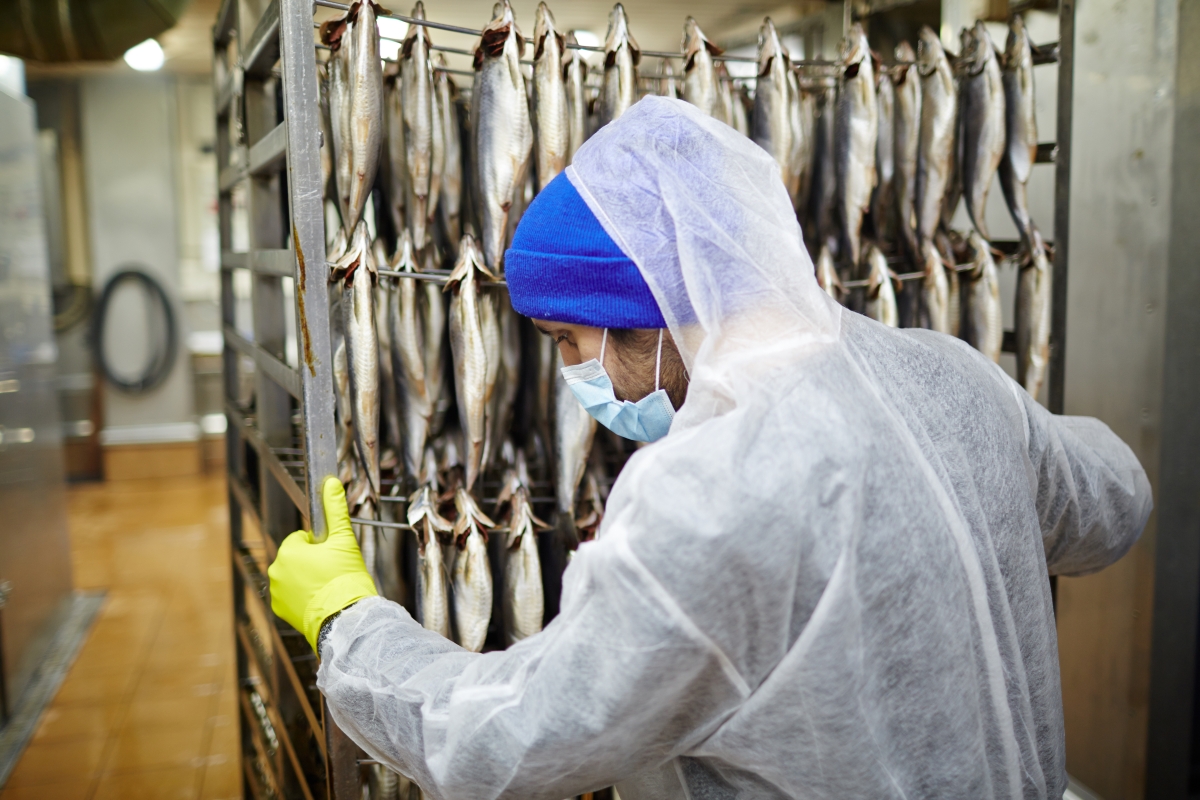Career Overview
Labourers in this group:
- Do clean-up, packaging, material handling and other basic activities related to fish and seafood processing
- Work in fish and seafood processing and packaging plants
Job Titles
Duties
Labourers in fish and seafood processing perform some or all of the following duties:
- Unload fish and shellfish from fishing vessels and transport them by hand or forklift truck to fish processing plant
- Put fresh fish fillets in brine solution to condition them for wrapping or freezing
- Weigh fish or shellfish, record weight and pack fish in ice
- Sort fish according to species, weight and destination
- Clean work areas and equipment
- Transport supplies and packaging materials throughout plant and storage area manually or with powered equipment
- Measure and dump ingredients into hoppers of mixing and grinding machines
Earnings
Earnings is income that workers receive in exchange for their labour. Depending on the type of employment, earnings can be in the form of wages (hourly), salaries (fixed monthly or annual) or self-employed earnings.
Work Environment
# Workers Employed
605% Employed Full Time
31%Key aspects of the work in this occupation:
- Work takes place in an indoor plant environment with some work done outdoors in various weather conditions
- Indoor temperatures may be cold when working in freezers and with ice
- Workers may be exposed to strong or unpleasant odours
- Work involves contact with water and other liquids
Career Pathways
Progression to other occupations in the fish processing industry is possible with experience.
Related Careers
Occupational Interests
It’s important to understand what kinds of occupations align with your interests.
For more about occupational interests visit Skills for the Future Workforce > Characteristics.
Here are the top occupational interest(s) for this career profile:
Education, Training and Skills
- Some secondary school education may be required
Education programs in B.C.
The following program areas are related to this occupation:
- Academic/Basic Upgrading

Skills
Every job calls for a certain set of skills. Knowing those skills is the first step in finding a good career fit.
Here, you will find the 10 most relevant workplace skills. Some are more important to achieving success in a certain career than others. These skills may come naturally to you or you may need to gain them through education, training and experience.
See the list of work-related skills below, ranked in order of importance for this career. Check out the list and see if this career matches your skills—take that first step!
Keeping track of and assessing your performance, other individuals, or organizations to make improvements or take corrective action.
Giving full attention to what other people are saying, taking time to understand the points being made, asking questions as appropriate, and not interrupting at inappropriate times.
Using logic and reasoning to identify the strengths and weaknesses of alternative solutions, conclusions or approaches to problems.
Talking to others to share information effectively.
Adjusting actions in relation to others' actions.
Understanding written sentences and paragraphs in work-related documents.
Conducting tests and inspections of products, services or processes to evaluate quality or performance.
Watching gauges, dials or other indicators to make sure that a machine is working properly.
Being aware of others’ reactions and understanding why they react as they do.
Controlling operations of equipment or systems.
Labour Market Statistics
Discover data, facts and information that have been gathered and analyzed. Learn about the characteristics of the economy and labour market in B.C.
Employment
Find out about employment types and trends by region and industry.
Employment
605Employment by Region







| Region | Employment | % Employment of this Occupation |
|---|---|---|
| Cariboo | 0 | 0.0% |
| Kootenay | 0 | 0.0% |
| Mainland/Southwest | 360 | 59.0% |
| North Coast and Nechako | 40 | 6.6% |
| Northeast | 0 | 0.0% |
| Thompson-Okanagan | 10 | 1.6% |
| Vancouver Island/Coast | 195 | 32.0% |
Labour Market Outlook
The B.C. Labour Market Outlook is a 10-year forecast of the expected supply and demand for labour in the province. It’s usually updated every year. The purpose is to provide British Columbians with the knowledge to make informed decisions on careers, skills training, education and hiring.
Forecasted Job Openings (2024-2034)
370Forecasted Job Openings
Forecasted Employment Growth Rate
Composition of Job Openings
Job Openings by Region (2024-2034)







| Region | Job Openings | Avg. Annual Employment Growth |
|---|---|---|
| Cariboo | Not available | Not available |
| Kootenay | Not available | Not available |
| Mainland/Southwest | 280 | 2.3% |
| North Coast and Nechako | 10 | -0.8% |
| Northeast | Not available | Not available |
| Thompson-Okanagan | Not available | Not available |
| Vancouver Island/Coast | 80 | 0.5% |
Industry Highlights
Learn about the opportunities in B.C.'s major industries, including employment trends, earning potential, locations of work and more.
Forecasted Job Openings by Industry
| Industry | Job Openings (2024-2034) |
|---|---|
| Manufacturing | 250 |
| Agriculture and Fishing | 60 |
| Wholesale Trade | 40 |
| Transportation and Warehousing | 10 |
| Business, Building and Other Support Services | 10 |
Resources
Resource information is currently not available.








